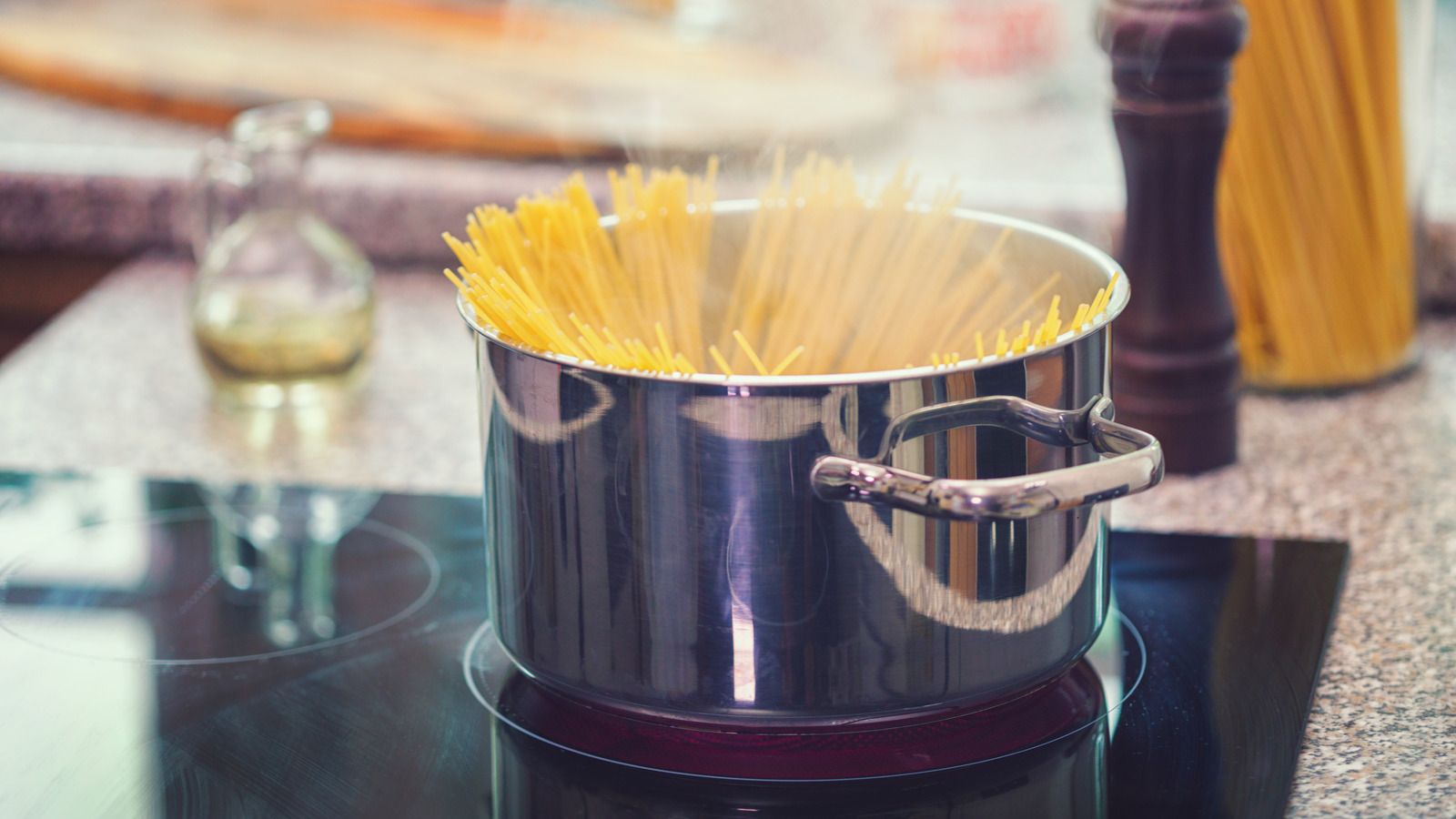
"Starch acts as a binding agent, which is great for making sauce and why chefs always tell you to save some of your pasta water. This starch isn't always so great for the pasta itself, though. When you cook noodles in a smaller pot, starch concentration becomes too high and the pasta starts to stick together. The imbalance between the large amount of starchy carbs and limited amount of water also causes a temperature decrease, which leads to unevenly cooked pasta."
"Cooking a pot of pasta shouldn't be too hard. Just boil the water, throw in the pasta, wait a couple of minutes, drain, and voilà. But, when heavenly Italian carbs come out sticking in clumps or looking undesirable, it quickly dawns on you that maybe there's a little bit of finesse involved, after all. As it turns out, one of the biggest mistakes you're making with pasta is not using a big enough pot."
Pasta releases starch during cooking, making the water cloudy; that starch helps sauces by binding and explains why saving pasta water is useful. Cooking pasta in a small pot raises starch concentration and lowers temperature, causing noodles to stick, cook unevenly, or become undercooked or mushy. Adequate water volume is necessary for uniform cooking; a one-pound box typically needs at least a six-quart pot. A roomy pasta pot with a straining lid, such as the Cuisinart 766S-22, provides sufficient capacity. A smaller pot can work in a pinch with appropriate adjustments and pasta choice.
Read at Tasting Table
Unable to calculate read time
Collection
[
|
...
]